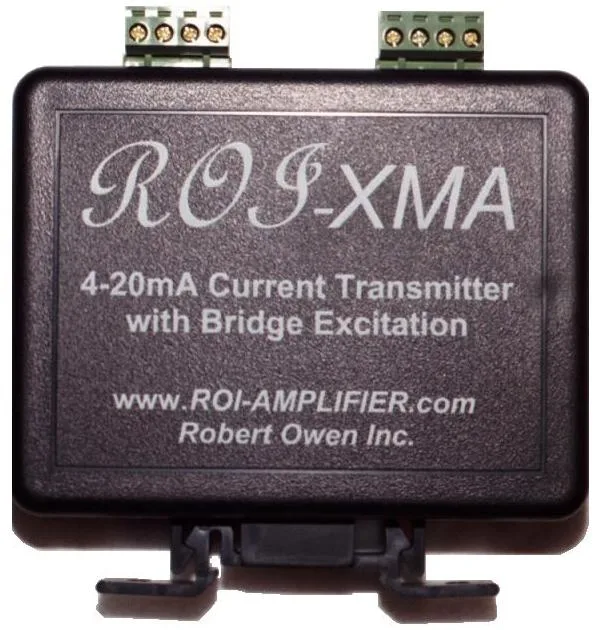LIVE ZERO 4-20MA INSTRUMENTATION SIGNAL KEY ADVANTAGE
Below 4mA indicates an electrical problem.
When we say live zero is a key advantage of 4-20mA instrumentation signals, how do you implement that, what do you use?
The ROI-XMA is an improved way to read sensors. Multiple sensor types. Multiple signal ranges. High linearity. High precision. Fast response. Long transmission distances. True analog signal conditioning, not microprocessor-based A-D conversion. But more it is a loop powered 4-20mA transmitter, with a minim signal of 4mA a live-zero.

With the ROI-XMA 4-20mA transmitter, the minimum or sensor measurement “span zero” signal is 4mA. If you read less that 4ma, something is wrong.
Where is this important? Depending on the software capabilities, this can be processed as an alarm or recorded in the data for analysis later.
Does this 4mA sensor span zero method work when you use the transmitter with a shunt resistor and voltage recording systems?
Using Ohms Law (E=IxR), with I = 4mA and R = 250 ohms, we see that the minimum measurement would be 1Vdc.
If the range of the voltage trend recorder is 0-5V, any measured value below 1V indicates an electrical problem. A supply fuse failure or tripped breaker will be immediately reported.
This is key as other methods of signal conditioning may use, a 0V minimum signal, which can indicate a good signal or a signal fault. You have a harder time knowing.
Why is this important? You may find out too late, when a bigger problem may result.
Robert Owen has years of experience in connecting sensors and software together. Because we code custom software solutions, we can get it done. We offer the approach most suited to the project. We can get it done, regardless of size, because we have the pieces to build solutions. For monitoring anywhere from a single sensor to hundreds. Robert Owen can assist with Sensor Signal Conditioning, Sensor Signal Processing, and Sensor Data Acquisition. Parts in a range of sensor signal connection services we offer.
To learn more Contact Us we look forward to answering your questions.